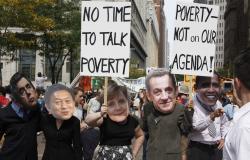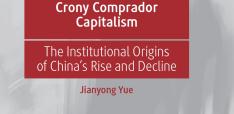What does the Public Think about Inequality, its Causes and Policy Responses?

Irene Bucelli, of the LSE and Franziska Mager, of Oxfam GB, summarize the results from an Oxfam volunteer research project.
When it comes to inequality, a growing body of evidence shows that people across countries underestimate the size of the gap between the rich and poor, including their wages. This can undermine support for policies to tackle inequality and even lead to apathy that consolidates the gap.
But how exactly are existing perceptions of inequality measured by social scientists? From a range of established, long-running international opinion and attitude surveys, we harvested the most-used questions asking people how they perceive inequality. Three key themes emerge throughout: tolerance of existing levels of inequality, attitudes towards policies to reduce inequality, and beliefs about its causes (table 1).
These themes, with the specific survey questions used to probe them, leave us with a goldmine of openly accessible data from a range of countries (table 2). As a first step we checked the data for seven countries where Oxfam works (UK, Germany, Italy, Spain, Mexico, US, South Africa).


Concern does not lead to support for government action
The surveys reflect high levels of concern about inequality across all countries. But this concern is not always linked to correspondingly high support for governments to tackle the gap (Figure 1). This finding is increasingly established in the inequality literature, and is consistent with recent researchconducted by Oxfam and the Australian National University.
Of course, specific subgroups can be driving such differences. Perhaps unsurprisingly, better-off groups generally report lower levels of concern with existing inequality and the lowest levels of support for tackling them. The data suggests that these differences are more marked in some countries (e.g. Germany, US) and less in others (Spain).
Figure 1. ISSP, Mean agreement to “Differences in income in [country] are too large” and “The government should reduce income differences”.

In what ways do people believe the gap between the rich and poor should be tackled, if not by governments? Or do governments, on the other hand, use people’s inertia as an excuse for not tackling the gap between the rich and poor, even if the public perceive it as too large?
Exploring perceived advantage and disadvantage
People may tolerate different levels of inequality because of their different beliefs about its causes. Of the five countries we checked this for, we found that the UK stood out as the only country where laziness and lack of will is the most popular explanation of disadvantage, rather than social injustice (Figure 2). Of course some subgroups drive this effect more than others. For example, in the UK there is no obvious difference between how income groups answer this question while in Germany, agreement is much higher among low and middle income groups.

Hard work or privileged upbringing?
In all countries, people from all groups believe that hard work is an important way to improve one’s position (Figure 3). But when it comes to the importance of family background to get ahead the picture is different. This is important because people tend to have overly optimistic perceptions of their life chances and as a result overestimate social mobility – the extent to which people move up or down the social ladder. We found that higher income groups tend to downplay the importance of family background.

More questions than answers?
This survey data, considered highly reliable, quoted and re-analysed in countless academic studies and policy documents, is invaluable for comparing attitudes and beliefs at the national level. It provides the researcher with easily digestible descriptive data, and covers the conceptual ‘cycle’ of how people perceive a situation to be (tolerance of existing inequality), what, if anything, they want done to tackle it and what causes they may attribute to it.
But the data also shows that surveys and polls need to catch up with the current state of the inequality debate – which has become more nuanced, researched and politicised with every passing year. There is so much more they should unpack.
To mention just a few examples, surveys don’t help respondents distinguish between different monetary inequality measures like wealth and income. We also still know very little about how people apply the concept of the gap between the rich and poor to their own position in the income or wealth distribution. Do they even think about the whole distribution, or just focus on their own respective position in relation to middle or top incomes? Oxfam’s recent research has once more confirmed that median bias is real — most people falsely think they are in the middle of the income distribution. This in turn can hugely influence how they perceive the overall distribution to be, and whether this is fair. On top of this, more research is needed to separate misperceptions (false beliefs) from misinformation.
The challenge for Oxfam is to make the most of existing data and avoid duplication where it isn’t necessary, whilst also pushing the boundaries of how inequality attitudes should be measured.
We clearly need to make use of reliable data sources like the ones discussed in this post, comparable over space and time. Our preliminary look at this type of data suggests that tolerance of inequality, attitudes towards inequality-reducing policies and beliefs and values aren’t all the same across countries – let alone within them. But this should be far from the only kind of data accepted to unpack such attitudes – and there is a role for Oxfam in expanding the way they are measured. What is being missed out? Where are surveys falling behind the new dimensions uncovered through debates on inequality, for example on absolute over relative inequality? Our recent research on whether information on inequality actually makes a difference to people’s attitudes towards inequality is a step in this direction.
Head image credit: G20 Voice via Flickr (CC BY 2.0). This post first appeared on:



